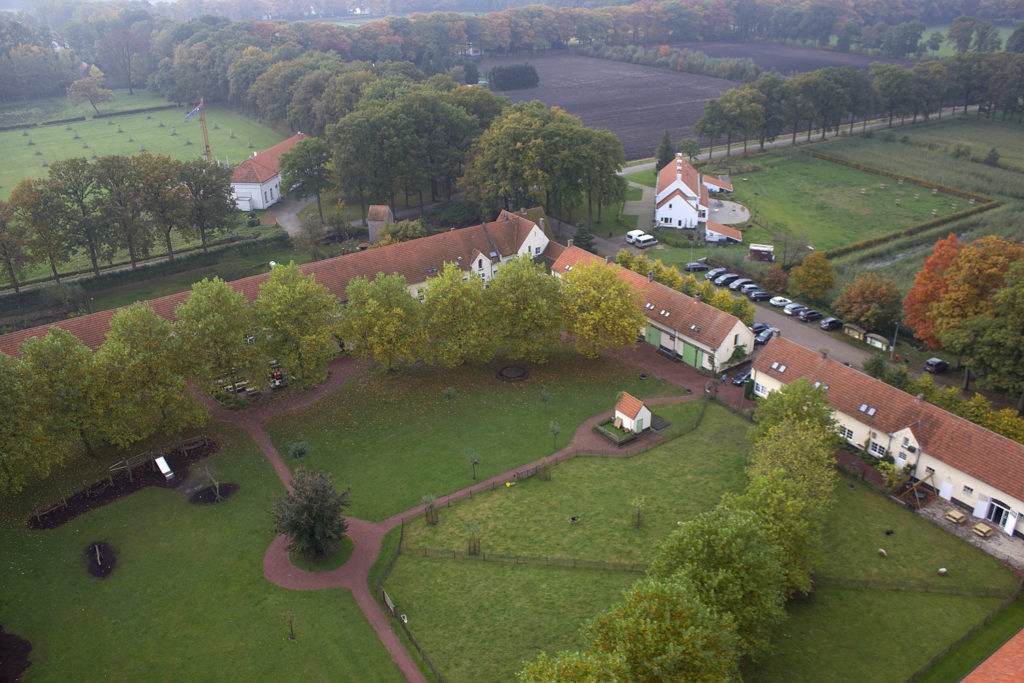This weekend, Belgium gained two new World Heritage sites, one of which is Spa, the health resort that in the past was a popular destination for the wealthy and aristocrats. The other site lies at the polar opposite of the spectrum, as it was set up to help people in poverty.
The United Nations Educational, Scientific and Cultural Organisation (Unesco) committee, which makes up the list of locations that are recognised for their cultural, historical, scientific or another form of significance, announced on Sunday that one of the Belgium-based Koloniën van Weldadigheid (Colonies of Benevolence) in Wortel, Antwerp will be protected.
What was the Wortel Colony?
At the start of the 19th century, a large-scale, innovative experiment was started in the Netherlands with the aim of putting people in poverty to work on agricultural estates in order to get their lives back on track.
From 1818 onwards, as the welfare society became prevalent, large, undeveloped pieces of land were bought, and within seven years, seven Colonies of Benevolence were founded: five in the Northern Netherlands and two in the Southern Netherlands, which is now the Belgian Kempen.
Set in 403 hectares of nature, where deer and konin horses of Polish origin now roam, multiple poor families, vagrants, beggars and even orphans were forcibly taken into the colonies to go to school and to learn discipline, but also to work on the land.
At the time, homelessness was against the law, and people could be locked up if they didn't have a minimum sum of money.
As part of this project, vagrants would go to a colony, worked and got paid, then when they had enough money they weren't vagrants anymore and could leave.
Bu working on this land was not easy, as most of these people did not have any agricultural experience. To make matters worse, the soil was not very fertile.
However, the meagre natural landscape was given a complete overhaul by human intervention, and it was given a more ordered and geometric structure, which resulted in monumental avenues, colony houses, asylums and farms being created, reflecting what was enlightened thinking at the time.
Around 45 years after the last colony was built, the Belgian state bought the Wortel Colony, and under its reign, vagrants and beggars were given shelter there and worked under guard on the land and in workhouses.
Both private individuals and the government were involved in this project, which paired finding a solution to poverty as a social problem with the belief in the social engineering of humans and landscape.
What is on the site now?
Almost 200 years after they were created, and almost 20 years after the last vagrants left, their traces are still clearly visible in these unique landscapes, of which the structure is still recognisable, and the original buildings of the colony are still standing.
They still fulfill social, judicial and welfare functions, and people still farm on the site, whilst a smaller farm section has been created for children to get a taste of farm life.
The vast area is now also known in the region as a place for outdoor activities, including walks, cycles and horse rides.
Becoming a World Heritage Site
In 2018, the site of this large-scale and long-lasting social experiment in poverty reduction was assessed a first time after being put forward by the former Flemish Minister for Immovable Heritage, Geert Bourgeois, but at the time, it was not added to the list.
However, “thanks to an intensive cooperation process with Icomos, the nomination dossier of the Colonies of Benevolence was adapted and we were able to present an adapted dossier to UNESCO for decision in January 2020,” said Flemish Minister for Immovable Heritage Matthias Diependaele.
The site had already received the green light from Icomos, the scientific body that watches over the international heritage and advises the Unesco committee, and of which proposals have never deviated from the final list.
The neighbouring colony of Merksplas would also have been included in the dossier of colonies that have been recognised, however, it is now the site of a prison, and this is being restored. It may be added to the file later, according to Diependaele.
In Belgium, several beguinages, which used to be home to single women who wished to live as clergy without taking monastic vows, were previously added to the list of more than 1,100 protected sites across the world, including the Onze-Lieve-Vrouw Begijnhof in Hoogstraten and the Groot Begijnhof in Mechelen.
Several buildings have also been added to the list, including the Belgian townhouses designed by architect Victor Horta and the Town Hall of Antwerp.

